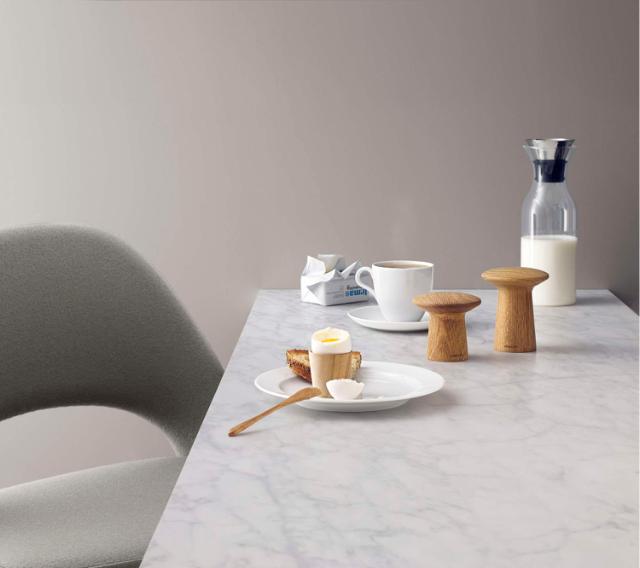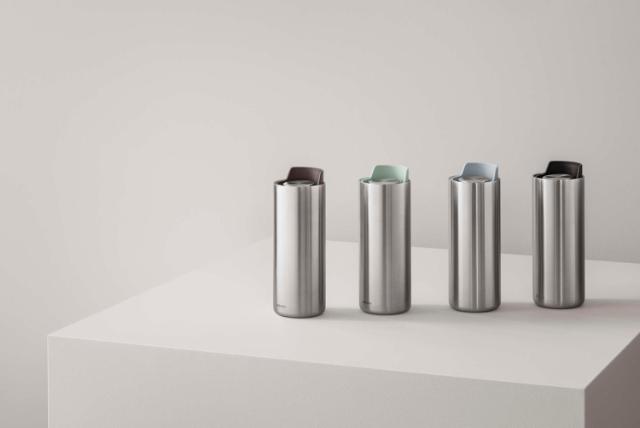Eva Trio:
From kitchen revolution to design icon
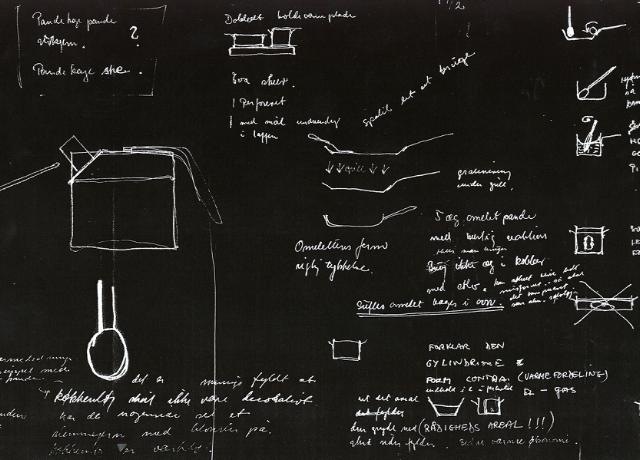
In his first sketches of the Eva Trio cookware, Ole Palsby introduced an innovative design concept
A classic in your kitchen
From designer Ole Palsby’s innovative visions in the 1970s to its status as a standard household item in every other Danish kitchen – Eva Trio’s cookware has joined the ranks of timeless Danish design classics. Read on for the story behind it all.
Eva Trio has been keeping pots on the boil for more than 40 years. Around one in two Danish households has at least one pot or pan from this popular line, and Eva Trio is just as influential among the culinary elites; when the Danish Chef of the Year and the National Culinary Team of Denmark train for prestigious competitions like the Bocuse d’Or, their preferred cookware is made by Eva Trio.
Standing the test of time, this iconic Danish cookware has retained its original design lines. So, how can a concept and design dating back to the mid-1970s go the distance, given the rapidly evolving demands of contemporary cuisine?
The answer is credibility and convincing standards in terms of both utility value and aesthetics.
Pots and pans are such obvious practical essentials that we rarely appreciate the design time and effort that go into every single piece of cookware. The Eva Trio story, though, is a shining example of how logic, care and not least innovation can turn rigid notions into something more advantageous.
This is the story of how a true Danish design classic came about.
A shop shuts and a door opens wide
In the mid-1970s, Ole Palsby was the owner of a specialist kitchenware store in Copenhagen. In those days, such stores were a rarity, and Palsby was undoubtedly a pioneer in that trade. But he was ahead of his time because demand was low, and by the end of 1975, Palsby had no choice but to shut up shop.
On the closing day, Palsby was visited by Erik Mangor, then CEO of Eva Solo. Mangor, familiar with Palsby’s inventiveness and high standards, commissioned him to “design some pots and pans superior to known international brands”.
Palsby rose to the challenge, and the partnership that followed was a game changer, revolutionising the world of kitchenware.
“Because Eva Trio is a household brand now, it’s hard for us to imagine how radical an innovation it was back in the day. But Eva Trio was the culmination of a design ethos dating back several centuries. Ole Palsby drew on all the kitchenware know-how that had been amassed over the years, and brought it all together in one unified line”, enthused Michael Sheridan, one of the world’s leading experts on Danish Design in comments to the national broadsheet, Berlingske, in 2014.
The man behind Eva Trio
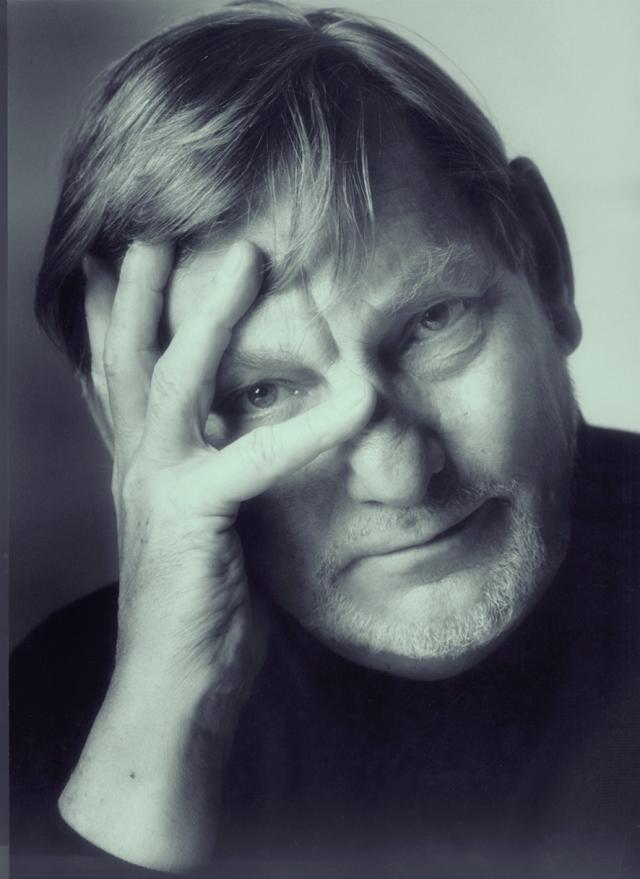
Ole Palsby (1935-2010), who had dispensed with any formal training, was one of the most eminent Danish proponents of the functionalist tradition. For more than 35 years, he maintained his standing as one of Denmark’s most successful and celebrated designers of kitchenware and tableware.
Instead of merely “designing”, Palsby preferred “making best effort”. His approach to design and innovation was democratic; his ethos being that design excellence should be affordable.
In 2000, Palsby was knighted by HRH the Queen of Denmark, and in 2004 he was awarded a diploma by the Danish Gastronomical Academy.
Palsby passed away in 2010, but his design lives on in his work for Eva Trio and other renowned brands like Alfi, Ittala and Rosendahl.
Professional-grade design for the home
Before putting pen to sketchpad, Palsby would carry out a painstaking needs analysis to identify the most suitable materials for various cooking techniques. The conclusion was clear: no single material could cater for every dish. Because no one would dream of boiling an egg in a cast iron pot or cooking potatoes in a copper pan.
Traditionally, only one single, specific metal was used in manufacturing a whole cookware line, but Palsby challenged that convention. He introduced the concept of cookware made of multiple metals, but which conformed to consistent design principles for a unified kitchenware aesthetic.
He based the line on three core materials – copper, aluminium and cast iron – each with their respective properties; hence the name “Trio”.
Not that the entire line was offered in either one or other material; instead, the various materials were carefully chosen for each piece of cookware, depending on their particular advantages and drawbacks.
The cast iron was used for frying pans because of its excellent heat retention, making it ideal for prolonged frying which requires a constant temperature. Copper was chosen for saucepans, a frying pan and sauté pan owing to its excellent heat conduction. Copper reacts instantly to changes in temperature, thus providing full control for the cook. Finally, aluminium was used for the foundation pieces in the Trio line: the pots and pans. This lightweight material conducts heat evenly and rapidly, and is easy to clean, making it ideal for everyday use.
Palsby also realised his vision for cookware with handles that remained cool enough to handle, even during intensive stovetop use. But equally, the handles should be sufficiently heat-safe for both oven and barbecue use. This requirement led him to choose stainless steel, for handles and lids too, as this metal is oven-safe, extremely durable and has low thermal conductivity.
Palsby’s appreciation of the role of the material in cookware became a crucial factor in bringing professional kitchen functionality to ordinary households. His innovative approach basically blazed a trail for how we prepare food in home kitchens.
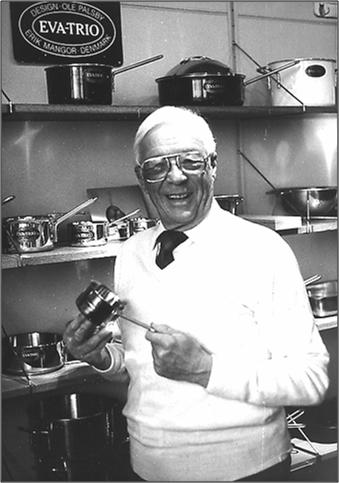
Erik Mangor, 1977
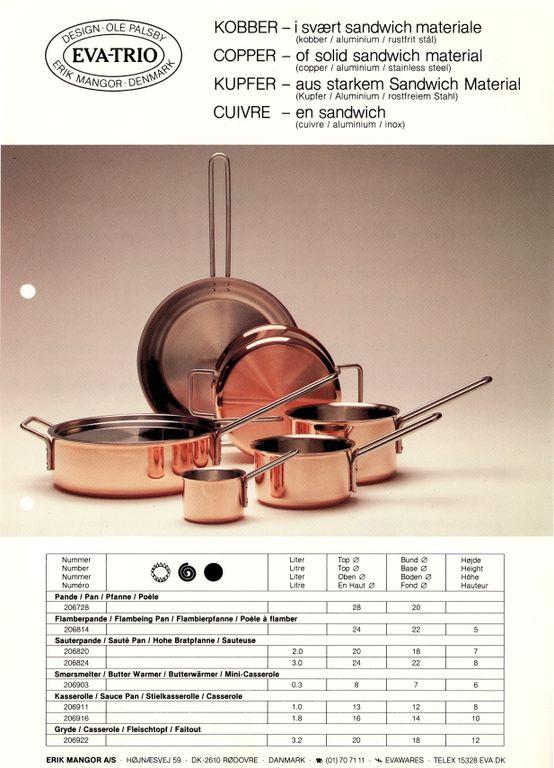
This early commercial and information sheet for Eva Trio copper cookware highlighted the unique feature of solid sandwich material (copper, aluminium, stainless steel)
Ole Palsby, 1977
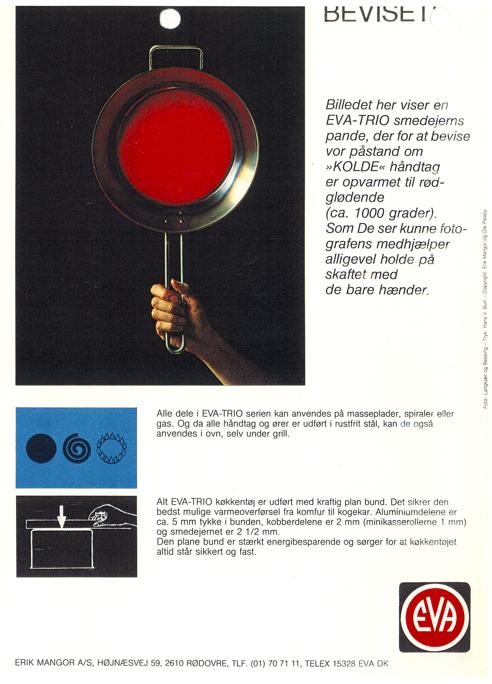
The advertisement shows an Eva Trio stainless steel pan, heated to red-hot to prove the claim about 'cool' handles.
Industrial and artisanal design
Palsby understood that the design of kitchenware should cater to the cooking and not the other way around. No ornate decorations or needless embellishments to steal the attention. Everything was to be carefully balanced with functionality in focus.
His approach led to sleek designs characterised by clean, honest lines and no-frills minimalism.
The Eva Trio line’s various elements, which originally comprised 18 pots and pans in either one or the other metal, gained their distinctive hallmarks from a number of consistent, streamlined, and distinctive common features: the cylindrical shapes of the bodies, the flat lids and riveted handles – which combined to give the cookware a sturdiness and timelessness.
To realise the concept of “stay-cool” handles, the rounded pot handles and elongated tubed handles were ingeniously riveted to the metal body so as to minimise the surface area in contact with the cook’s hands. This smart design ensured that hardly any heat was transferred from the pot or pan to the single or dual handles. Equally, the handles were stable to hold and also easy to hang up.
To introduce an extra dimension of usability, Palsby developed a flat plate-style lid, where the handle was not perched on top, but projected out over the side. That way, the lids were stackable for compact kitchen drawer storage. The flat design also made it possible to rest items on top of the lids like another pot to be kept hot, or a plate to be preheated. And with long shafts, the cook could lift the lid to peek at the cooking contents without risking scalds from rising steam.
These practical innovations were only half the story. Because the Trio range was so aesthetically appealing that it paved the way for cookware as serveware. The beautiful exterior made it acceptable to serve meals straight from the pot or pan brought to the table, which would have been unthinkable before.
Unique combinability
The final and crucial element that cemented the Trio line’s renown in Danish design history was Palsby’s vision of a holistic concept.
The original cookware was designed as a range of coordinated pieces that were combinable and stackable across types and materials. All the elements interacted harmoniously both functionally and aesthetically.
Palsby introduced pots and pans in three standardised diameters. This simple but ingenious concept made the individual items in the line stackable, minimising the storage space required in kitchen cabinets. Although it may seem obvious now, the stackability of the Eva Trio range broke new ground for cookware at that time.
The concept of standardised diameters enabled countless combinations of pots, lids and frying pans. This gave consumers the freedom to personalise their cookware to their cooking habits and preferences, while achieving a unified look in their kitchen.
As the crowning glory, the entire line was coordinated by the lids. Eva Trio is probably the only cookware in the world that is sold without accompanying lids. But there was a wise rationale for this unconventional feature: with standardised diameters, the four different pot lids in the cookware line can be used across the entire product range. And a lid from 1977 fits perfectly on a brand new pot from 2023. This continuity gives consumers the freedom to choose lids to cater for their individual needs and preferences, but also reduces the number of lids needed.
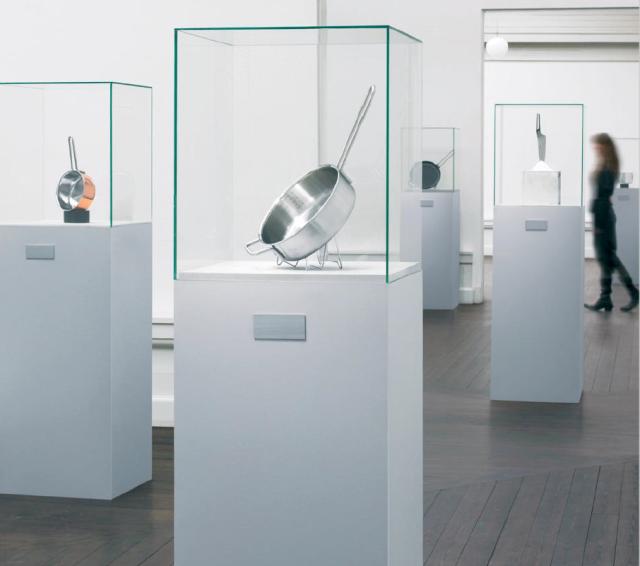
The Eva Trio cookware collection has received several awards for its innovative design and functionality since its launch in 1977
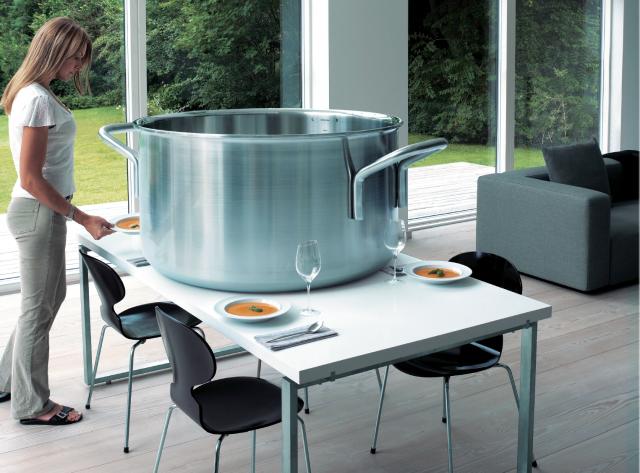
Eva Trio was arguably the first collection of kitchen equipment that was sufficiently stylish to leave out on display, thus paving the way for cookware to become an integral part of serveware
“Great kitchenware”
Despite the innovative design, Eva Trio was not an instant bestseller. The interest ran highest among chefs and women’s institutes – but that was set to change. A deciding factor for Eva Trio’s success was the compelling review written by George Kringelbach, culinary editor of the national newspaper Politiken.
Under the plain headline “Great Kitchenware”, Kringelbach wrote:
“Given how much junk and how many ridiculous items are offered for sale as “professional kitchenware”, it almost brings tears to the eyes to finally behold the real deal; a new line of kitchenware based on superlative quality – and superlative logic”.
To round off his glowing review, Kringelbach promised:
“All my pots and pans will be scrapped as soon as I can get hold of their superior equivalents in the “Trio” line. It’s as simple as that”.
Today, Eva Trio is a comprehensive concept covering all aspects of preparing, plating and serving food and refreshments. Ole Palsby’s holistic approach lives on in kitchen tools, kitchenware and dishware with the same combinability across lines and materials: the pot lid fits on the pasta bowl, and the colander fits on the plate, so you need fewer pieces to be able to do more.
Or as Palsby himself put it:
“The concept evolved slowly, branching out like a well-rooted tree. This now has an inner strength because of its unique combinabiity, which makes it inimitable in whole or in part. It’s all one holistic summation”.
Eva Trio is part of the Danish company Eva Solo A/S, which has supplied innovation and exclusive design within home accessories and kitchenware since 1913.
.jpg&width=640&format=webp)


